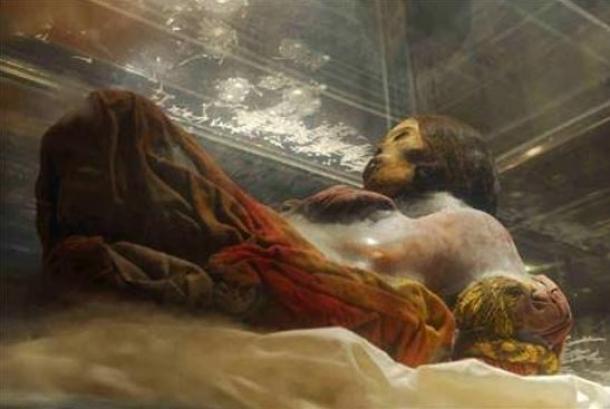Momia Juanita (‘Mummy Juanita’) is the name given to the mummy of a 15th century Incan girl who was discovered in Peru in 1995. She is known also as the ‘Lady of Ampato’, and the ‘Inca Ice Maiden’, the first because she was found on the top of Mount Ampato, a dormant volcano in the Andes, and the second because her body was preserved due to the frigid temperatures on top of that mountain.
Researchers have suggested that Mummy Juanita was a victim of an important Incan sacrificial rite known as Capacocha (Capac Cocha), which has sometimes been translated as ‘royal obligation’. Scientific analyses of Momia Juanita have also revealed various interesting details about her life and death.
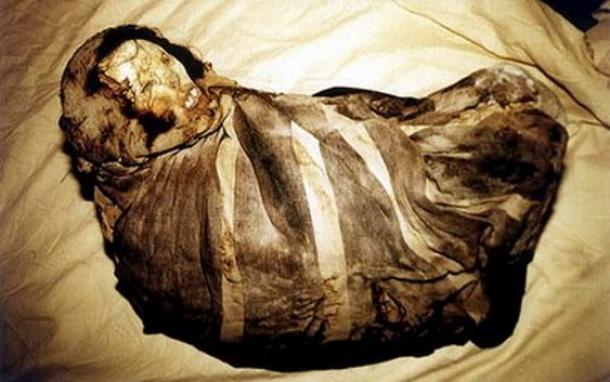
Mummy Juanita before unwrapping her body. ( Fair Use )
Discovering Mummy Juanita
The discovery of Momia Juanita was made on September 8, 1995 by the archaeologist Johan Reinhard, and Miguel Zarate, his assistant. This find was made possible thanks to the melting of Mount Ampato’s snowcap, which was caused by volcanic ash that came from the eruption of a nearby volcano. As a result of this melting, the mummy was exposed, and tumbled down the mountainside, where it was subsequently found by Reinhard and Zarate. During a second expedition up the mountain in October of the same year, the frozen mummies of two more individuals were uncovered in a lower area of Mount Ampato.
According to researchers, Momia Juanita was only between 12 and 15 years old when she died. The two individuals discovered a month later were also children, and it has been speculated that they may have been companion sacrifices to Mummy Juanita’s on the top of the mountain.
Capacocha – Ritual Sacrifice
According to researchers, Momia Juanita was sacrificed as part of a rite known as Capacocha. This rite required the Inca to sacrifice the best and healthiest amongst them. This was done in an attempt to appease the gods, thereby ensuring a good harvest, or to prevent some natural disaster. Based on the location where the girl was sacrificed, it has been suggested that the ritual may have been connected to the worship of Mount Ampato.
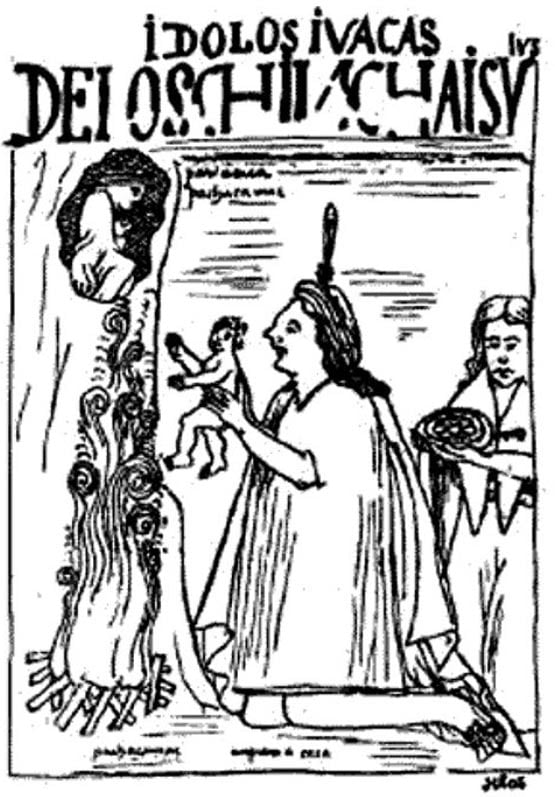
Illustration by Felipe Guaman Poma de Ayala (1615). This image may depict the ritual of Capacocha. National Library of Denmark. ( Public Domain )
Juanita’s Death
When Momia Juanita was discovered, she was wrapped up in a bundle. Apart from the remains of the young girl, the bundle also contained various artifacts, including numerous miniature clay statues, shells, and gold objects. These were left as offerings to the gods. Archaeologists have proposed that these objects, along with food, coca leaves, and chicha, an alcoholic drink distilled from corn, would have been brought by the priests as they led the girl up the mountain.
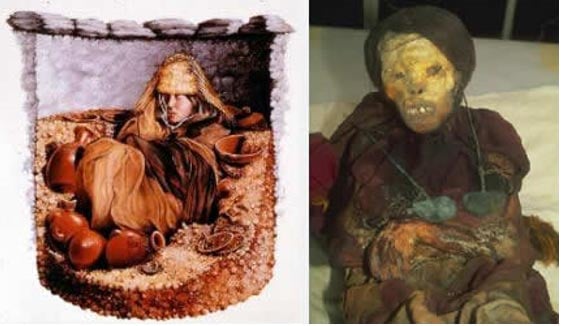
Left: Reconstruction of what her burial may have looked like. Right: Mummy Juanita. ( Destylou- Historia )
The latter two would have been used to sedate the child, said to be a common practice used by the Incas before they sacrificed their victims. Once the victim was in this intoxicated state, the priests would carry out the sacrifice. In the case of Momia Juanita, it was revealed with radiology, that a club blow to the head caused massive hemorrhage, resulting in her death.
Another scientific analysis that revealed interesting information about Momia Juanita’s life is the isotopic analysis of her hair, which was made possible as it was so well preserved. This analysis provided researchers with information about the girl’s diet. It indicates that this girl was selected as a sacrificial victim about a year before her actual death. This is marked by a change in diet, which was revealed through the isotopic analysis of her hair.
Before being chosen for the sacrifice, she had a standard Incan diet, which included potatoes and vegetables. This changed, however, about a year prior to the sacrifice, as it was found that she began to consume animal proteins and maize, which were the foods of the elites.
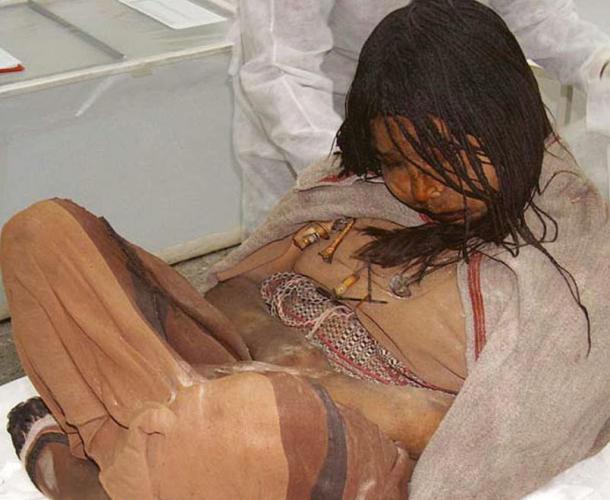
Today, Mummy Juanita is being housed in the Museo Santuarios Andinos in Arequipa, a city not far from Mount Ampato. The mummy is kept in a special case that carefully maintains the temperature and humidity within it, to ensure the preservation of these remains for the future.
